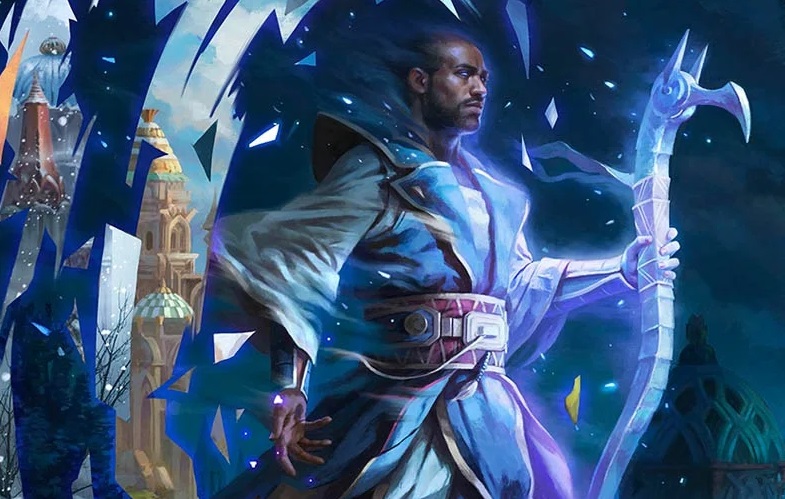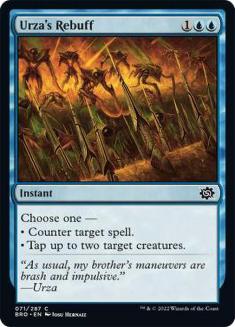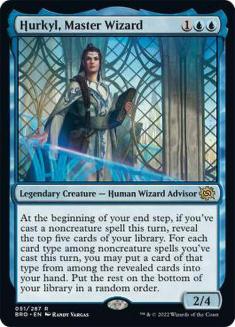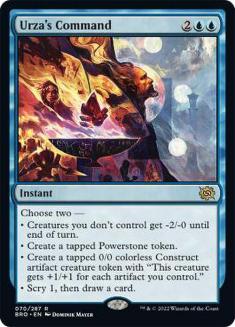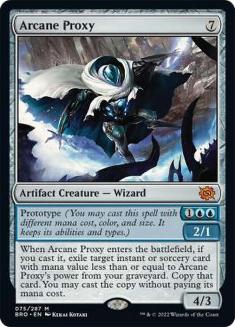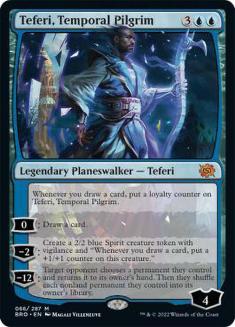The Brothers’ War and Standard
As paper Magic gets back into full swing, the final Standard-legal set of 2022 is upon us. Even with a renewed focus on in-person events, 2022 has been a letdown for those of us that have experienced what Magic was like prior to the pandemic. Since the announcement of the return of the paper Pro Tour, though, I have been optimistic for the future of the game. The tournament was set to have a Regional Championship, with Regional Championship Qualifiers to fuel it. The format gives a nod to the Regional Qualifiers of old (Pro Tour Qualifiers before that), which is a strong indication of good things to come.
The very next article I wrote when they announced a Pioneer Pro Tour contained a recommendation to the card makers. I continued to pepper this recommendation in my articles for months after, because I felt so strongly about it. I asked Wizards of the Coast (WotC) to make their next Pro Tour format Standard for the health of the game. In addition, for what is best for Magic, I added how it would benefit them financially if the format were returned to even a fragment of its former glory. Since it exists largely on MTG Arena, extinguished from most of the local game stores, it’ll take a drastic move to make sealed product worth buying again.
When Standard-legal booster boxes hit the shelves, their value depends on them containing Commander or older-format staples. This rule will remain until Standard is a tournament format again, one that can be played from Friday Night Magic to the Pro Tour. My appeal notwithstanding, I believe WotC will make this move for purely financial reasons. It is not rocket science that influencing the value of the cards within the booster pack will lead to higher sales. This move will be mutually beneficial for sales and tournament health. Adding the support of MTG Arena will reinforce this move, so I look forward to the 2023 competitive landscape.
The Brothers’ War in Context
The Brothers’ War is the most powerful Standard-legal set we have seen in quite some time. There is nothing astonishingly broken, like an Oko, Thief of Crowns, which would prompt fans to begin chanting for bans. Instead, we have already seen efficient removal, a balanced planeswalker, and some exciting (and expensive) spells. With the full set revealed, I will craft a list of must-haves in preparation for the new Standard next time. For now, I wanted to highlight the Top 3 blue cards that will influence the direction of control right out of the gate.
Honorable Mentions
Outside the Top 3, there are some cards that may see fringe play from the control caucus. These cards are on the fringe of competitive viability.
The first blue card that does not inspire many is Urza’s Rebuff. If you are like me, it is sickening to see WotC hold the line on the three-cost counterspell law. They have already dropped the four-cost sweeper rule, acknowledging that threats have surpassed the disruption by a country mile. The same should hold true for blue disruption. I am not advocating for the return of Counterspell; however, it is time that a two-cost version with a drawback returns to us. I will take Censor, Miscalculation, Mana Leak, Logic Knot, or anything in-between. In the meantime, we are stuck with glorified Cancel, and this may see its way into Standard control decks.
The other honorable mention is Hurkyl, Master Wizard. I am always looking for an opportunity to get creatures into the action, especially in sideboarded games. When battling against midrange, big mana, and control, it becomes a war of attrition that creatures can assist with. Hurkyl is almost there, rewarding the controller for tapping mana on their own turn with card advantage. It has a decent power and toughness, making it not completely irrelevant in the field of battle, so it may see some play. I hope it does.
#3: Urza’s Command
When I saw the return of Commands, I got really excited. Their modal versatility is a way for control to get an edge, turning it in for card advantage and/or using it to impact the battlefield. Urza’s Command is just that, with four relevant abilities that control can take full advantage of. This set focuses heavily on artifacts, and tap-out control is usually one of the beneficiaries of that. There are some giant, expensive artifacts, many of which would end the game on the spot if resolved. With that in mind, let us talk about the “weakest” mode on Urza’s Command.
Creating a tapped Powerstone token is something WotC are just giving away on many of the cards from The Brothers’ War. For this reason, it may not be the greatest thing control can do right out of the gates. With more sets added to Standard and more artifacts in the mix, this ability can only get better. As mentioned, there are some giant artifacts that could use powering out, so we may not want to sleep on the Powerstone part of Urza’s Command.
Creating a Construct, the same as what Urza’s Saga makes, is a great ability to toss on a blue, instant Command. It gets the semi-nerf of entering the battlefield tapped, which makes sense. Turning Urza’s Command into a straight-up removal spell could tip this card’s balance too heavily into control’s favor. Making a threat at the end of the turn, to then attack an opposing planeswalker, is a fine series as is. I hope artifacts play a major role in Standard control deckbuilding so that we can see these two abilities flourish.
The last two abilities on Urza’s Command fit the traditional control formula. Giving enemy creatures -2 power is not exactly tapping them all, but it’s a combat trick. If control employs more creatures, a distinct possibility given the top two cards coming up, then this could be a blowout on the battlefield. It is unlikely that this will be better than tapping all threats, but I have never been in the business of criticizing based on a card’s predecessors. It has been a long time since Cryptic Command left the shores of Standard, and it is long past time to move on.
The final ability on Urza’s Command is the classic “draw a card,” with a bonus scry 1 attached. Without a similar ability, I would never sleeve up this card for tournament play. Card advantage is what gives control its strength and the ability to win the battle of one-for-ones. I will wager that Urza’s Command will often make either a Powerstone (if holding an artifact haymaker) or a Construct, in addition to drawing a card. There will be some scenarios calling for a combat trick, but those events will be less frequent. Urza’s Command is a well-designed card that I am excited to play in Standard and in my Urza, Lord High Artificer Commander deck.
#2: Arcane Proxy
Choosing which card to label as the best blue card in The Brothers’ War was very difficult. Arcane Proxy landed slightly below my number one choice due to my focus on Standard, where it will see competitive play. This creature has an extremely high ceiling in older formats, something I look forward to brewing with soon. We all miss Snapcaster Mage, and this may give us a taste of that power once again. It is unfair to judge Proxy based on what came before, just as it was with Urza’s Command to Cryptic Command, but only in the newer formats. When looking at its viability in Modern and before, that direct comparison must take place to determine who makes the team.
Arcane Proxy does the Snapcaster Mage trick, entering the battlefield for the low cost of three mana and copying an instant or sorcery card from your graveyard. This actually results in a better deal, being able to cast a two-cost spell for just the initial three-mana Arcane Proxy investment. As with Snapcaster Mage, there’s additional upside if you wait until the late-game. Dropping this monster at seven mana results in any instant or sorcery of your choosing to hit the stack, an exciting prospect for a card I know makes the cut in Standard.
The largest downside to Arcane Proxy is an obvious one. Sorcery-speed cards make all control players cry, especially if they come from the reactive school of control. This drawback eliminates the ability to counter spells and reduces Arcane Proxy to a common advantage creature. It will kill something, or draw some cards, but outside of supplemental assistance, it ends there. One of the hidden advantages is the increase in artifacts that this gives control, a trait I will not overlook in the upcoming Standard.
#1: Teferi, Temporal Pilgrim
Teferi, Temporal Pilgrim is the monarch of blue cards from The Brothers’ War. It follows the controversially boring formula of planeswalkers: drawing cards, protecting itself, and having a killer ultimate. Some folks may be sick of this type of design, but please continue to inject it directly into my veins. In addition to those three staples, it adds loyalty for each card drawn. This static ability is what actually sets it over the edge, even though it may seem innocuous.
Teferi enters the battlefield with four loyalty and then quickly drops to two if it makes a creature to defend itself. This puts the planeswalker into a precarious situation in most battlefield scenarios, easily attacked down by the opponent. Adding loyalty for free is what makes it tougher than the run-of-a-mil planeswalker, getting it well out of range by enacting the traditional control plan. The first turn may require drawing a card, getting it out of simple attack range. After that, it may be too late for the opponent to answer it, as many control cards draw cards and/or remove threats.
The Spirit token is the most fascinating part of Teferi. Not only does it get a permanent +1/+1 counter whenever you draw a card, it also has vigilance. This is an underrated ability for control creatures, something I had to figure out by playing with The Wandering Emperor enough. Attacking down planeswalkers and threatening life totals against other slow decks, while also defending, is fantastic. Making a couple of these Spirits can get very out of hand, very quickly. Since it triggers with each card drawn, the loyalty of Teferi goes up and its Spirit defenders get gigantic.
The ultimate of Teferi is not something I see happening often because of the strength of the Spirit token. If the game is being moderately handled by disruption, Teferi will take over the game with massive threats that continue to grow in size each turn. There are scenarios where the ultimate can come out of nowhere, especially if a big card draw spell lands at the end of the opponent’s turn. In that case, it would be a shock to everyone at the table and not something predictable that is ticking up for multiple turns.
My next article will identify the top control cards from The Brothers’ War. As you can tell here, there is no shortage of content in that department. It was difficult to make a Top 3 list for blue, so the comprehensive list will require some tough cuts. This is a good problem to have, and I hope you all are as excited as I am!

